Nouns Teaching Resources
Save time on creating noun lesson plans with printable worksheets and digital activities, handy noun lists, parts of speech games and more from the teachers of Teach Starter.
Aligned with both TEKS ELAR and Common Core ELA Curriculum standards, the teacher resources in this collection are all teacher-created. You'll find printables to help students learn to differentiate nouns from verbs, digital activities to help teach kids about common, proper and possessive nouns and more!
Whether you're working on singular and plural forms of nouns with your 3rd grade class, exploring the functions of nouns in phrases and clauses with your 5th graders or starting at the very beginning with a noun introduction to your 1st graders, we've got you covered!
Are you new to teaching this part of the ELA curriculum or just looking for new ways to engage students as they learn how to use nouns? Take a peek at this primer from our teacher team, including a breakdown of the different types of nouns, a kid-friendly definition of nouns, explanations of how to teach kids about possessive nouns and plenty more!
What Is a Noun? A Kid-Friendly Definition
Sure, you know the definition of this part of speech yourself, but we've filled the Teach Starter site with handy definitions and tools you can use to explain the various parts of speech to your students.
So, let’s start with a kid-friendly definition of noun!
A noun is a word that is used to identify a person, place, thing or idea.
Nouns are just one of the eight parts of speech that we use to create sentences when we are writing, but it's an important one. Most sentences that we write or say out loud will contain a noun.
Singular and Plural Nouns — What's the Difference?
Singular nouns refer to just one person, place, thing or idea. Plural nouns, on the other hand, identify multiple people, places, things or ideas!
How to Make a Singular Noun Plural
The challenge for most students is learning how to properly adjust a singular noun to its plural form.
Here are a few rules to help your students make the changes:
1. -s Rule
Many nouns can be made plural by simply adding the letter s to the end.
For example if you change "book" to "books," you've used the -s rule for plural nouns.
2. -es Rule
Nouns ending in s, x, z, ch, or sh require adding -es to the end in order to make them plural nouns. For example, box becomes boxes when it is in the plural form.
3. -ies Rule
If a noun ends in a consonant + y, teach your students to change the y to i and add -es. For example, baby becomes babies when it is made plural.
4. -ves Rule
Do you have a noun ending in f or fe? To create the plural form, change the f or fe to v and add -es. For example leaf is changed to leaves.
5. Vowel + -y Rule
If you have a singular noun ending in a vowel + y, it can be written in plural form by adding -s. For example, key becomes keys.
6. Irregular Plural Nouns
Some nouns have irregular plural forms and don't follow specific patterns. For example, mouse becomes mice when it's made plural, and child becomes children. These irregular plurals often trip students up, so teaching word pairs is important to help build their understanding.
8 Singular Nouns That Don't Change When They're Plural — A List for Kids
Some nouns are tricksters that remain the same in both singular and plural forms. Here's a handy list for kids to help them keep track!
- deer
- scissors
- pants
- pajamas
- fish
- moose
- sheep
- rice
2 Different Types of Nouns (With Examples) and What They Do
Considering how important this part of speech is in sentence writing, it's hardly surprising that there are different types of nouns that we can use to communicate. The two main types of nouns are common nouns and proper nouns. Let's break down common nouns vs. proper nouns and look at a few examples!
Common Nouns
Common nouns are the nouns we use to identify general people, places, things and ideas. For example, if we say the city, we are referring to a general place. In this case, "city" is a common noun.
Common nouns only begin with a capital letter if they appear at the beginning of a sentence.
Examples of common nouns for kids include dog, pizza, girl, and post office.
Proper Nouns
Proper nouns are different from common nouns because they are used to identify specific people, places, things and ideas. For example, New York City is a proper noun because it refers to a specific city.
Proper nouns always begin with a capital letter, even if they appear in the middle of a sentence or at the end.
Examples of proper nouns for kids include Mrs. Jiminez, Roosevelt Elementary School and LEGO.
Common Nouns Lists – 4 Different Kinds to Teach About
There may be two different main types of nouns, but the variation doesn't stop with common and proper. Common nouns can be broken down into a variety of different categories.
Here's a list of common nouns most kids learn about in elementary or middle school!
Concrete Nouns
A concrete noun is a word we use to identify things that we can perceive using our five senses. Concrete nouns can be touched, tasted, smelled, felt and heard.
Examples of common nouns for kids include wind, pineapple, flowers, cotton and music.
Abstract Nouns
Unlike concrete nouns, abstract nouns refer to things we cannot actually sense with any of our 5 senses. These nouns are identifying things that are not physical.
Things like our ideas and our feelings are considered abstract nouns.
Examples of abstract nouns for kids include bravery, friendship and happiness.

Collective Nouns
A collective noun is a type of common noun that is used to identify a group or collection of people, places, things or ideas.
Examples of collective nouns for kids include team, family and class.
Countable Nouns vs. Uncountable Nouns — What's the Difference?
Another way to break down the main types of nouns is to look at whether they're countable or uncountable. So what's the difference?
Countable Nouns
Countable nouns are just what the name implies. These are nouns that identify things we can count! We can apply a specific number to a countable noun.
For example, if you look around a classroom, you can count the number of desks or tables. That makes both desks and tables countable nouns.
Uncountable Nouns
If countable nouns can be counted, it makes sense that uncountable nouns identify things that can't be counted.
For example, we can't count water or sadness. These are both uncountable nouns.
- Plus Plan
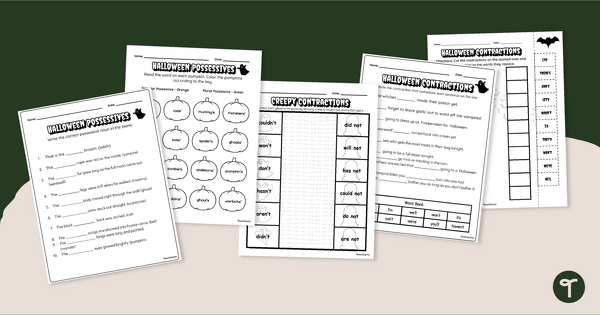
Halloween Grammar Practice Worksheets - Apostrophe Practice
Practice using apostrophes of possession and in contractions with a set of spooktacular Halloween Apostrophe worksheets.
- Plus Plan
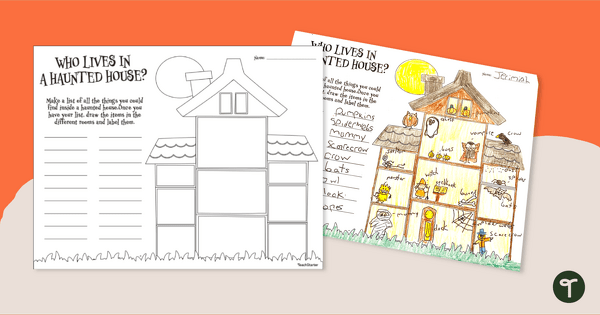
Who Lives in a Haunted House? 2nd Grade Nouns Worksheet
Draw and write about all the kooky nouns in a haunted house with a printable Halloween words worksheet for 2nd grade.
- Plus Plan
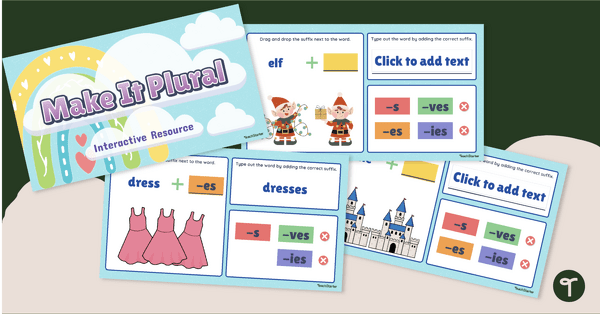
Make It Plural - Google Interactive Resource
Help children grasp the tricky concept of pluralizing nouns with an interactive Google Slides activity.
- Plus Plan
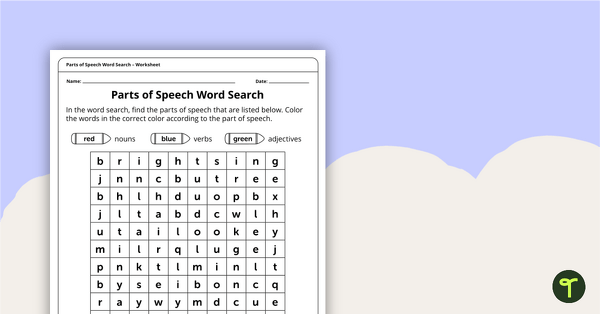
Parts of Speech Word Search – Nouns, Adjectives, and Verbs – Worksheet
A word search where students find and categorize nouns, adjectives and verbs.
- Plus Plan
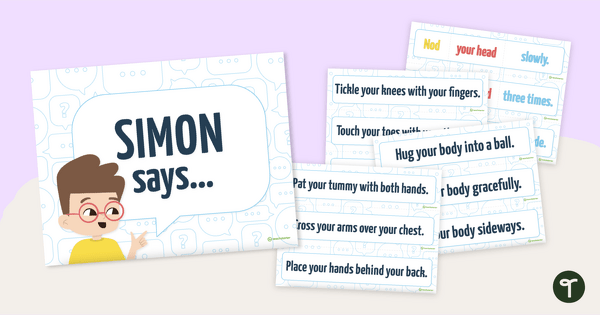
"Simon Says" Commands - Card Deck
A set of 24 instruction cards to use when playing "Simon Says."
- Plus Plan
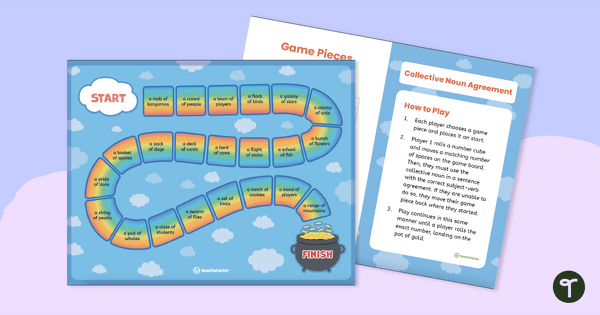
Collective Noun Agreement Board Game
Students move along board game spaces and use collective nouns in sentences with correct subject-verb agreement.
- Plus Plan
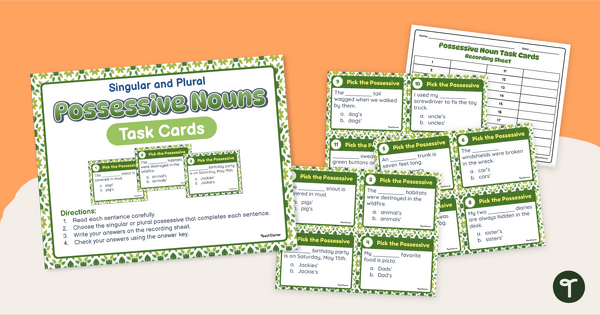
Singular and Plural Possessives Task Cards
Practice writing phrases using the correct singular or plural possessive noun with a set of task cards.
- Plus Plan
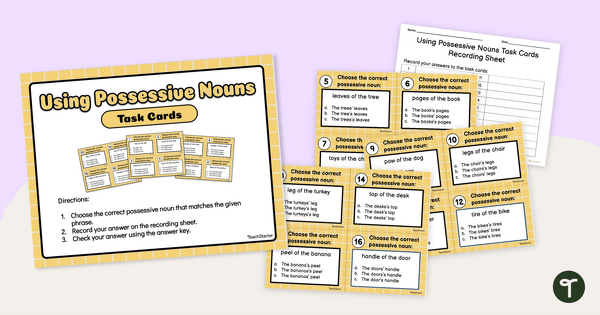
Using Possessive Nouns - Task Cards
Practice writing phrases using the correct singular or plural possessive noun with a set of task cards.
- Plus Plan
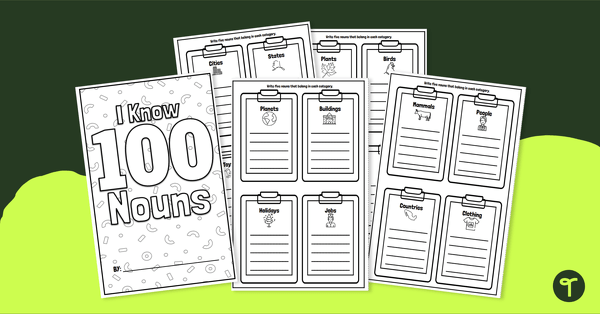
I Know 100 Nouns! 100th Day Activity Book
Blend the 100th Day of School with grammar practice by making a book that contains 100 nouns!
- Plus Plan

Halloween Parts of Speech- Cut and Paste Worksheet
Have a bit of spooky fun identifying parts of speech by sorting Halloween nouns, verbs, and adjectives with a cut and paste worksheet.
- Plus Plan
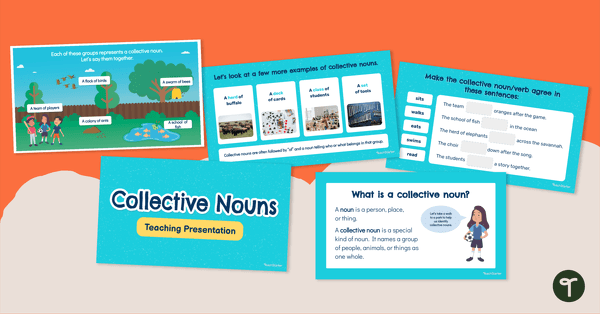
Collective Nouns Teaching Presentation
Teach your students to recognize and use collective nouns with a teaching presentation.
- Plus Plan

Possessive Nouns - Interactive Clipcards
Provide digital possessive noun practice activities for your learners with a Google Interactive activity.
- Plus Plan
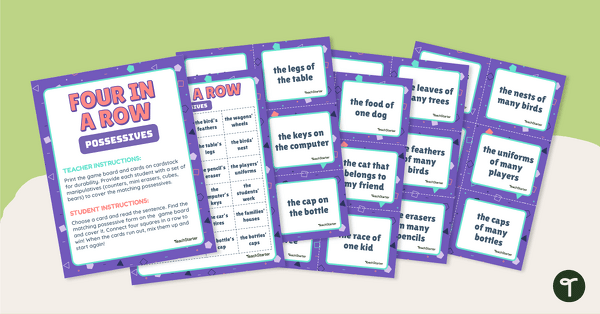
Possessive Nouns - Four in a Row Game
Practice using the correct forms of possessive nouns with an exciting game of Four-in-a-Row!
- Plus Plan
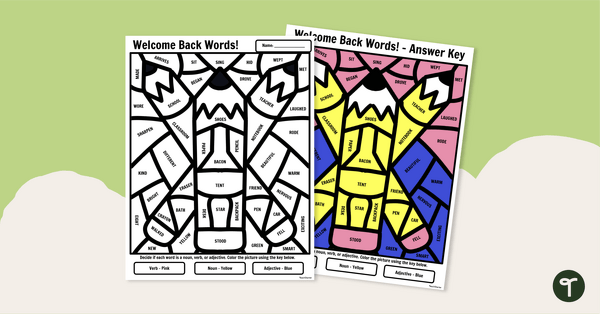
Color-by-Code Grammar- Back to School Coloring Sheet
Use this color by code grammar worksheet as a back to school parts of speech review activity with your students.
- Plus Plan
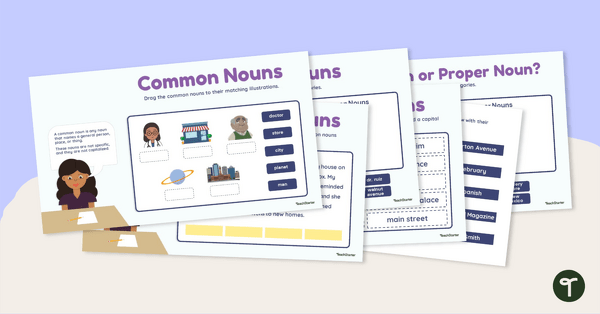
Common and Proper Nouns - Google Interactive Activity
Identify common and proper nouns by sorting words in their context.
- Plus Plan

Building Sundaes - Noun Categories
Read and sort nouns while crafting deliciously decodable sundaes.
- Plus Plan
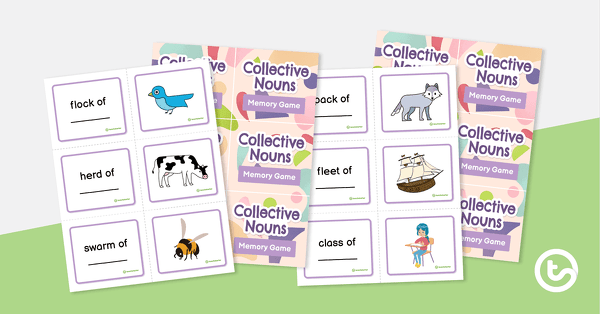
Collective Nouns Memory Game
Practice identifying collective nouns with a set of 30 match-up cards.
- Plus Plan
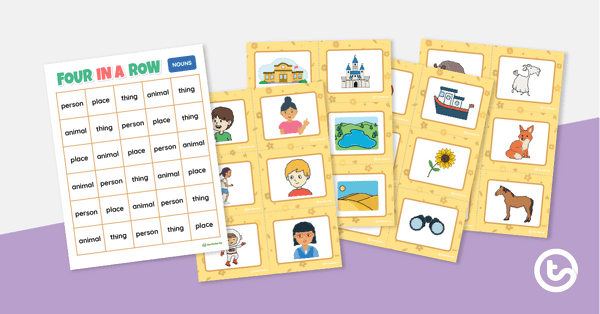
Four In A Row Game - Nouns
Develop noun recognition with this set of 28 noun picture cards that students will identify to get 4 in a row.
- Plus Plan
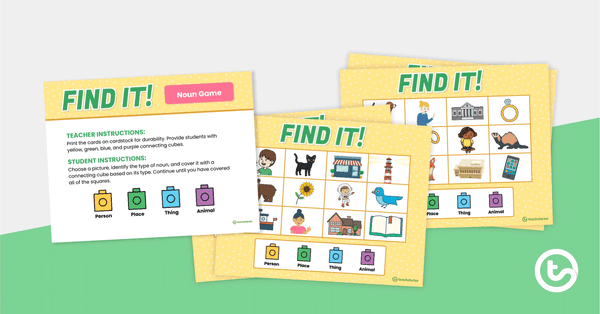
Find It! Noun Game
Practice recognizing and using nouns with this set of 5 game boards.
- Plus Plan
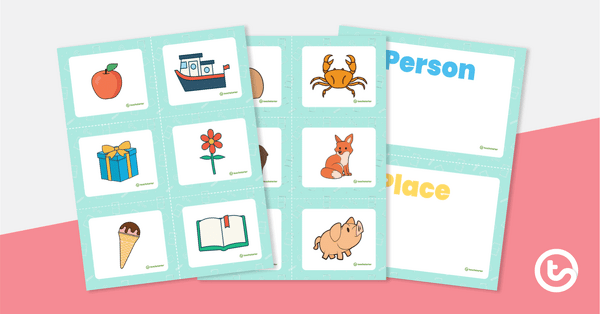
Nouns Sorting Activity
Practice recognizing and sorting nouns into categories using these 24 picture common noun cards.
- Plus Plan
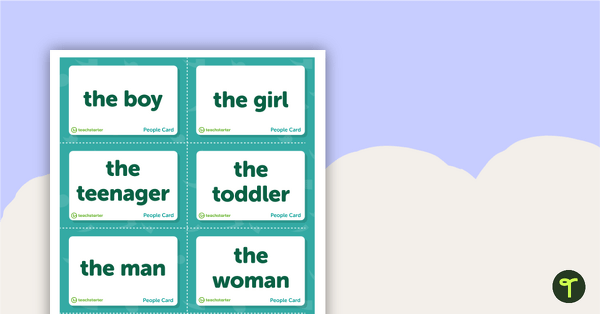
Apostrophe of Possession Card Game
An interactive card game for students to play to reinforce their understanding of the apostrophe of possession.
- Plus Plan
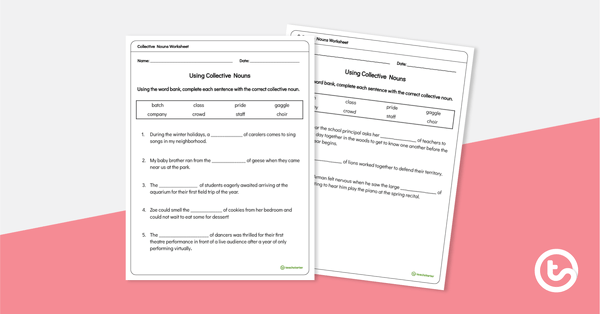
Collective Nouns Worksheet
Use this worksheet to review collective nouns with 8 fill-in-the-blank sentences and an accompanying word bank.
- Plus Plan
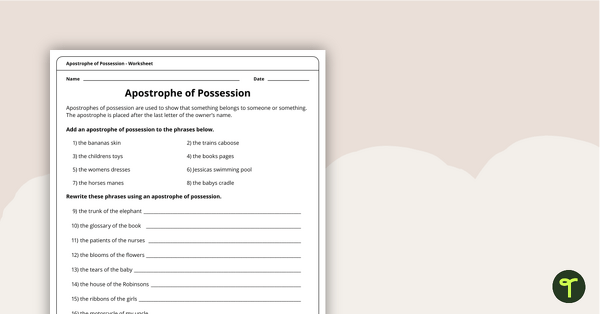
Apostrophe of Possession – Worksheets
A 3-page worksheet to help students reinforce their understanding of the apostrophe of possession.
- Plus Plan
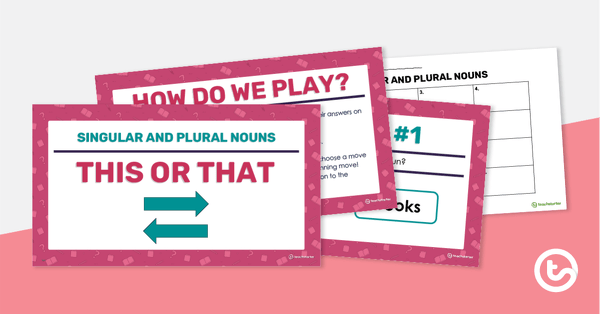
This or That! PowerPoint Game - Singular and Plural Nouns
An active PowerPoint game to practice working with singular and plural nouns.
- Plus Plan
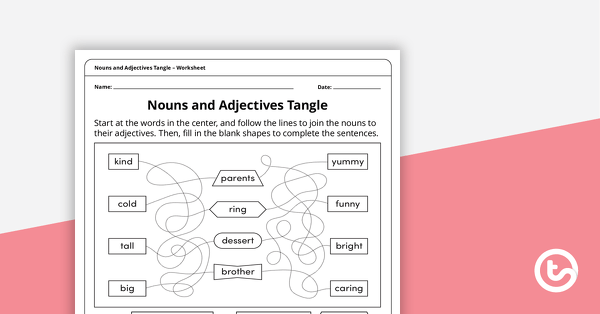
Nouns and Adjectives Tangle – Worksheet
A worksheet that focuses on creating sentences with nouns and adjectives.
- Plus Plan
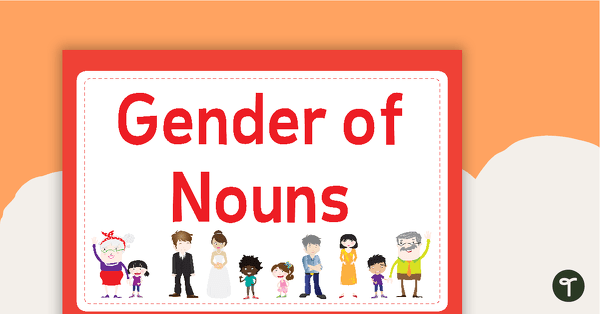
Gender Nouns Posters
A set of educational posters showing common gender nouns in the English language.
- Plus Plan
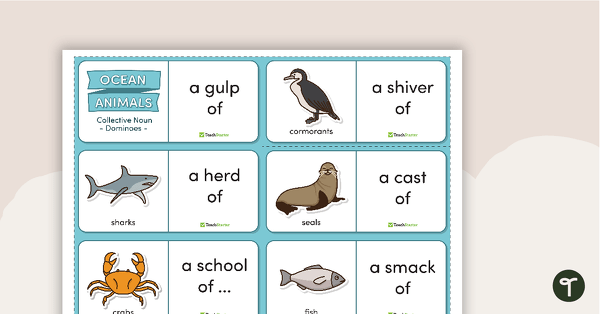
Ocean-Themed Collective Noun Dominoes
A set of ocean-themed collective noun dominoes.
- Plus Plan
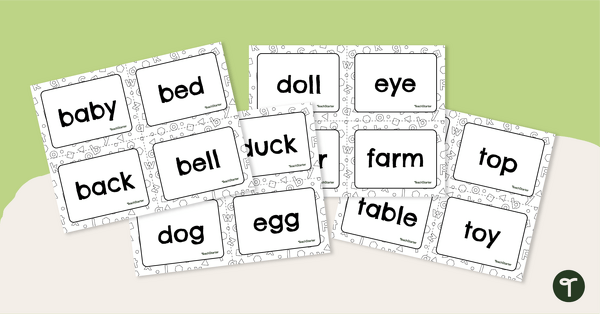
Dolch Sight Word Flashcards - Nouns
Build reading fluency and practice Dolch nouns with a deck of Dolch sight word flash cards.
- Plus Plan
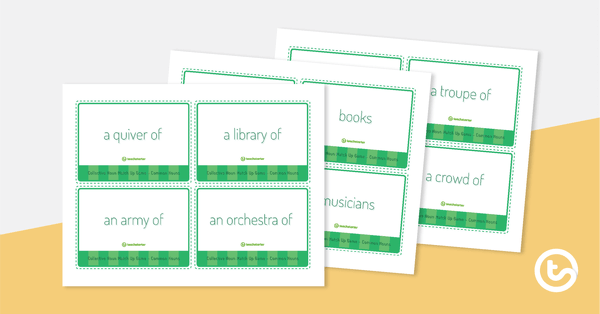
Collective Nouns Match Up Activity - Objects and People
A pack of 32 cards to use when learning about collective nouns.
- Plus Plan
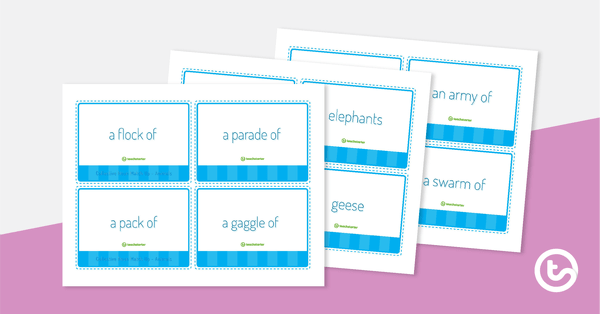
Collective Nouns Matchup Activity - Animals
A pack of 32 cards to use when learning about collective nouns.
- Plus Plan
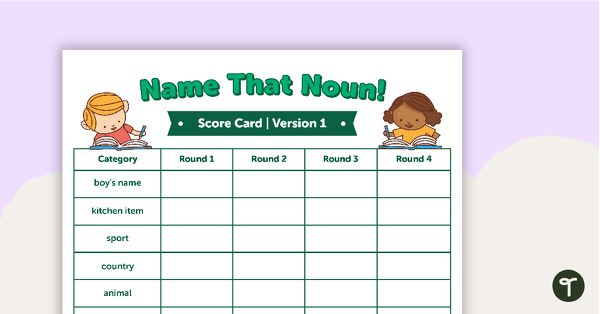
Grammar Game - Name That Noun!
A fun game for students to play in small groups to reinforce their understanding of nouns.
- Plus Plan
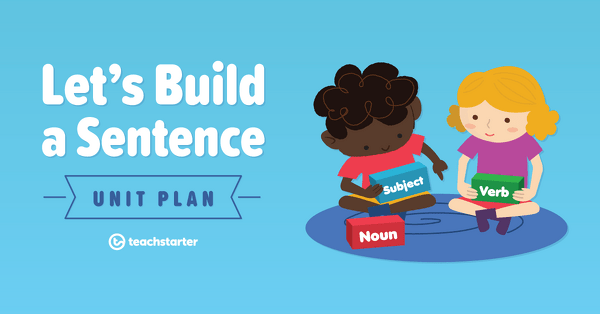
Common and Proper Nouns
A 60 minute lesson in which students will identify that a noun is a naming word used for a person, place, or object.